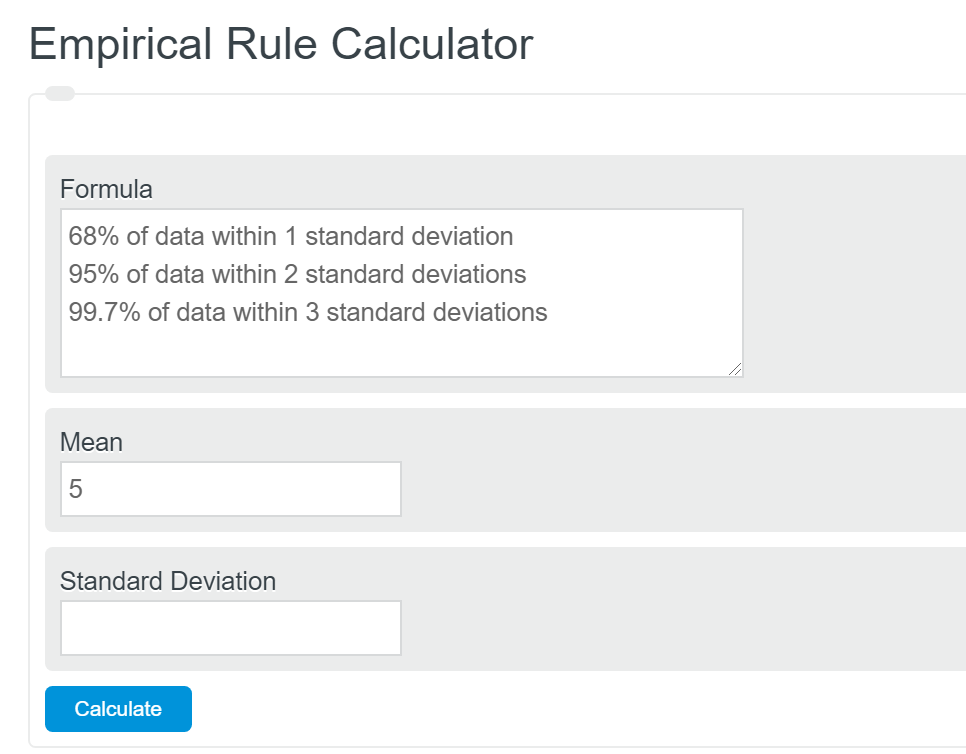Enter the standard deviation and mean of your data set into the calculator to determine the values that fall within the empirical rule.
- Standard Deviation Calculator
- Statistical Significance Calculator
- Confidence Interval Calculator (1 or 2 means)
- Post Test Probability Calculator
Empirical Rule Formula
The following equation is used to calculate the total values of data within the 3 sets of the empirical rule.
- 68% of data within 1 standard deviation
- 95% of data within 2 standard deviations
- 99.7% of data within 3 standard deviations
Empirical Rule Definition
The Empirical Rule, also known as the 68-95-99.7 rule, is a statistical concept used to understand data distribution in a bell-shaped curve, specifically for a normal distribution.
This rule states that for a normal distribution, approximately 68% of the data falls within one standard deviation of the mean, about 95% falls within two standard deviations, and almost 99.7% falls within three standard deviations.
The Empirical Rule is important because it provides a quick and easy way to estimate the data spread in a normal distribution without performing complex calculations.
By knowing the distribution’s characteristics, it becomes possible to make predictions and draw conclusions about the data.
Understanding the Empirical Rule allows us to determine the likelihood of an event occurring based on its position relative to the mean.
For example, if a data point is within one standard deviation of the mean, we can infer that it is relatively common and has a high probability of occurring. If a data point is more than three standard deviations away from the mean, it is considered extremely rare, with a low probability of occurrence.
The Empirical Rule also helps in identifying outliers, which are data points that deviate significantly from the norm. Since outliers can have a substantial impact on overall statistical analysis, recognizing them becomes crucial.
Using the rule, we can easily identify data points that fall outside the expected range and investigate them further to determine if they are valid or if some error occurred.
Empirical Rule Example
How to calculate the empirical rule?
- First, determine the standard deviation.
Calculate the average value of the standard deviation of the data set.
- Next, determine the empirical rule values.
Using the formula above, calculate the empirical rule values.
FAQ
The empirical rule states that 68% of data lies within 1 standard deviation, 95% of data lies within 2 standard deviations, and 99.7% of data lies within 3 standard deviations.

